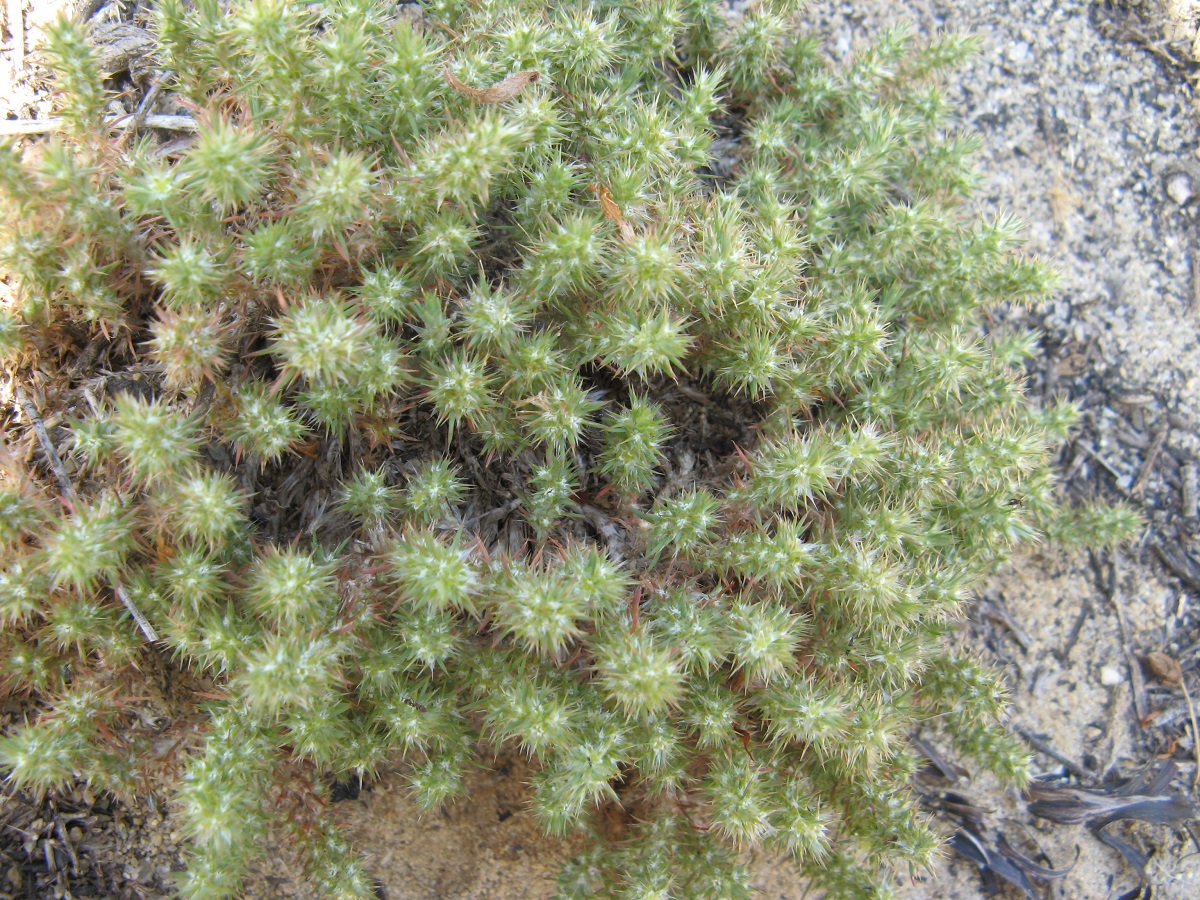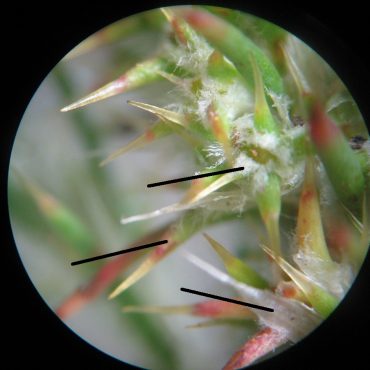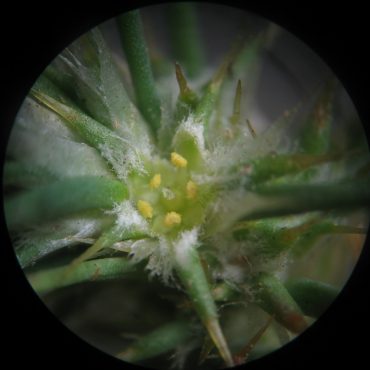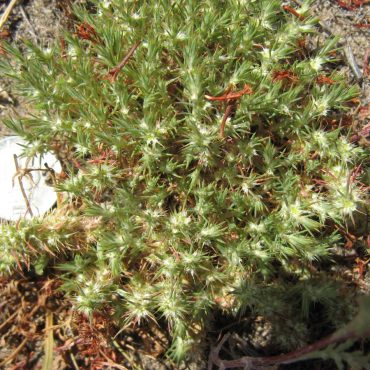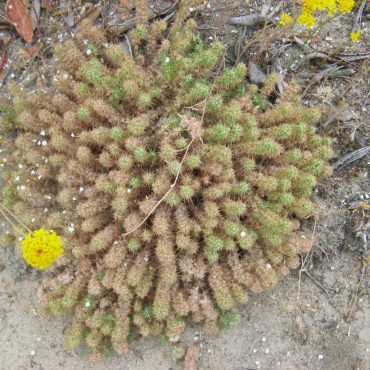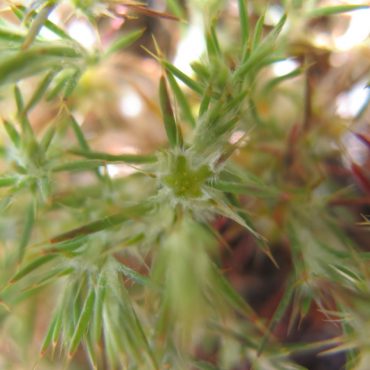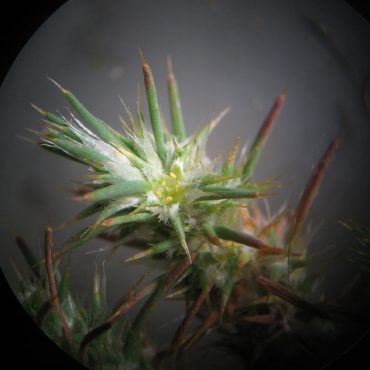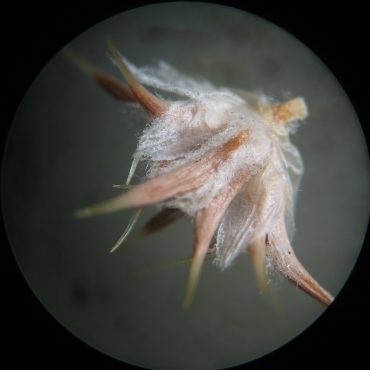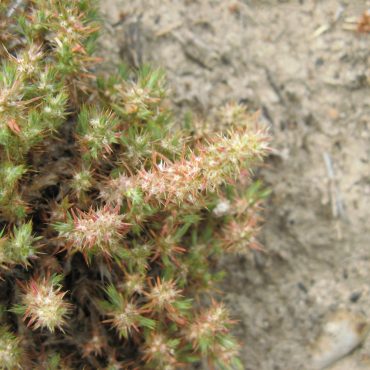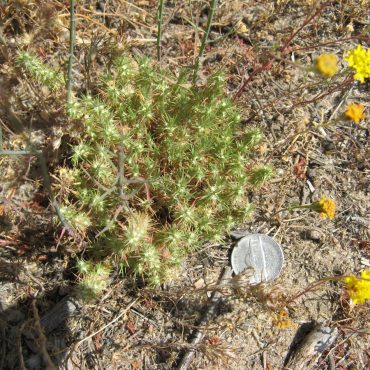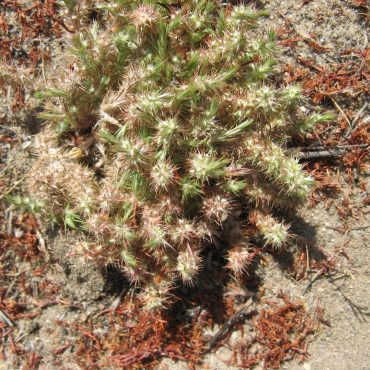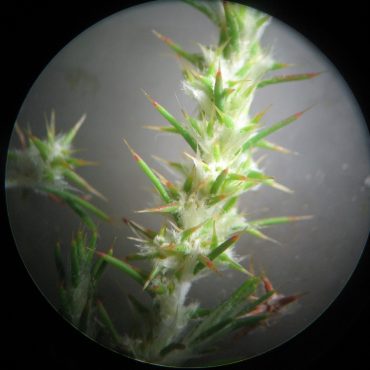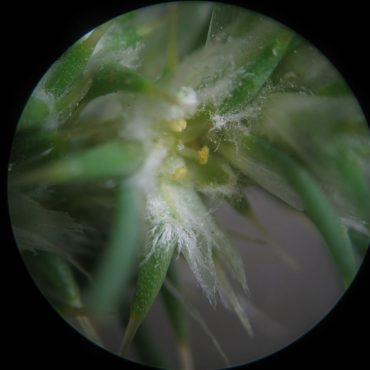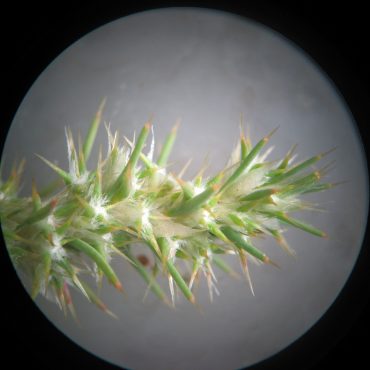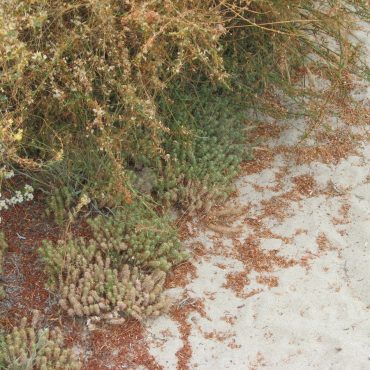Description
2,3,4,89
Tread lightly is a low, compact perennial herb, usually less than 4 inches (10 cm) high and 12 inches (30 cm) wide. Numerous short, branching stems grow horizontally from a taproot. Branches are densely covered with leaves and stipules, giving them a bristly appearance. The leaves are green, often tipped with pink; they are opposite, 1/2 inch (1.3 cm) or less in length, narrowly lanceolate in shape; they have smooth margins are smooth and end in a small spine. A shorter, papery stipule is fused to the inner surface of each leaf base. Stipules are ovate to lanceolate and pointed or jagged at the ends. Dried leaves and stipules often remain in bands along the stem.
Tiny flowers about 1/8 inch (3mm) across are tucked among the leaves and stipules. Petals are not evident (they are reduced to tiny scales). There are five small sepals, which have long woolly hairs below and end in single small spines. The woolly sepals give the flowers their white color. There are 3-5 stamens, which alternate with sterile stamens. Anthers are heart-shaped. The pistil consists of one rounded, superior ovary with two short styles; the stigma is not differentiated and the style is receptive along its entire length. The major flowering time is April – June.1
The fruit is a very small, one-chambered, one-seeded, bladderlike capsule with a papery wall. Unlike most capsules, it lacks a predictable line for splitting open. The sepals often remain attached to the developing fruit and they may drop from the plant as a unit before the fruit opens. This spiny unit may serve as a seed dispersal mechanism, catching a ride on feathers or fur of passing birds and mammals.271

